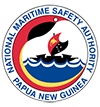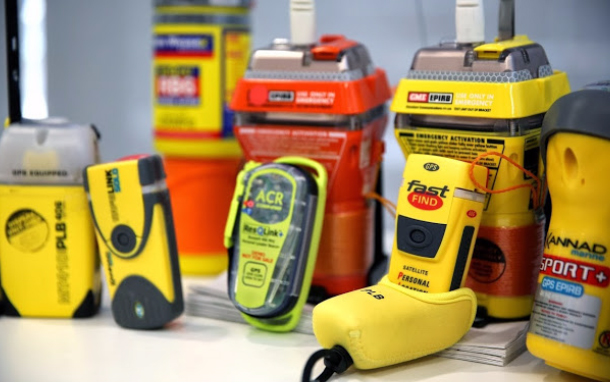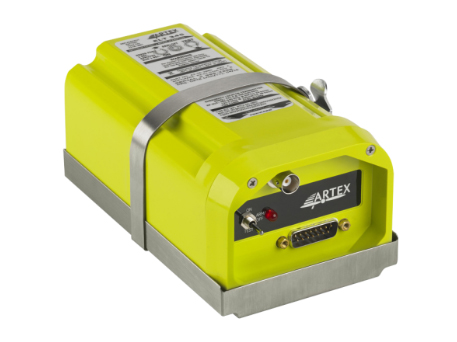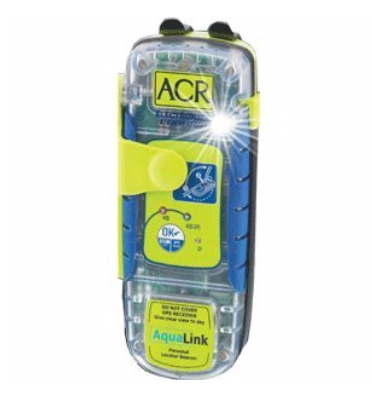Distress Beacons - Papua New Guinea National Maritime Safety Authority
What is an EPIRB?
An Emergency Position Indicating Radio Beacon or EPIRB is used to alert search and rescue services in the event of an emergency. It does this by transmitting a coded message on the 406 MHz distress frequency via satellite and earth stations to the nearest rescue co-ordination centre.

Some EPIRBs also have built-in GPS which enables the rescue services to accurately locate you to +/- 50 metres.
Who uses EPIRBs?
EPIRBs are generally installed on boats and can either be operated automatically after an incident or manually. In most countries they are mandated to be used in all commercial shipping. However, they are also used on yachts and leisure boats.
ELTs
ELTs are emergency transmitters that are carried aboard most general aviation aircraft.
In the event of an aircraft accident, these devices are designed to transmit a distress signal on 121.5, 243.0-megahertz frequencies (and for newer ELTs, on 406 MHz). Currently, ELTs are required to be installed in almost all registered civil aircraft.

When ELTs were mandated in 1973, most aircraft were equipped with an ELT that transmits on the 121.5 MHz frequency, the designated international distress frequency.
The newest model activates 81-83 percent of the time and transmits a more accurate and near-instantaneous emergency signal by utilizing digital technology. This digital 406-MHz ELT also allows search and rescue personnel to have vital information specific to an aircraft.
PLBs
Personal Locator Beacons, commonly called PLBs are small handheld devices which, when activated will send an emergency message to Search and Rescue Forces if you get into an actual emergency situation.
PLBs are a fairly new addition the safety tool box which everyone who spends time outdoors, especially those who do risky activities away from civilization, should carry.

These RCCs will then dispatch Search and Rescue (SAR) Teams to assist you. PLBs should only be activated in an actual emergency situation as rescue workers will come looking for you.
PLBs as well as their aviation (ELT) and Marine (EPIRB) counterparts, when activated send digital a signal on 406 Mega Hertz (MHz) to the SARSAT Search and Rescuer Satellite system. This 406MHZ encoded data burst can send various bits of information (depending on the type of beacon you have) which the SARSAT system picks up and decodes.
Personal Locator Beacons come in different varieties:
- Very Basic PLBs which only have the 406MHz transmitter – These are the least expensive type
- Some models have the 406MHz transmitter plus a 121.5MHz “homing” transmitter – This allows rescuers to home in on your location once they are nearby
- Some PLBs have an internal Global Positioning System (GPS) receiver – this allows the PLB to transmit your actual location with the distress message
- The best models have all of these functions!
- There are other options offered on some brands which while cool, do not affect the actual operation of the beacon in normal conditions. Options like – waterproofing, an internal strobe light, belt clips, etc.
406 MHz Distress Beacon Registration
The Distress Beacon Registration Form is used to register 406 MHz Distress Beacon that are coded with the Papua New Guinea country code. Registration is Free.
To download form, click on the link below:
406 MHz Distress Beacon Registration Form
For Maritime Emergencies and Search & Rescue contact PNGMRCC on PNGMRCC@nmsa.gov.pg or Toll Free number (+675) 735 170 17




